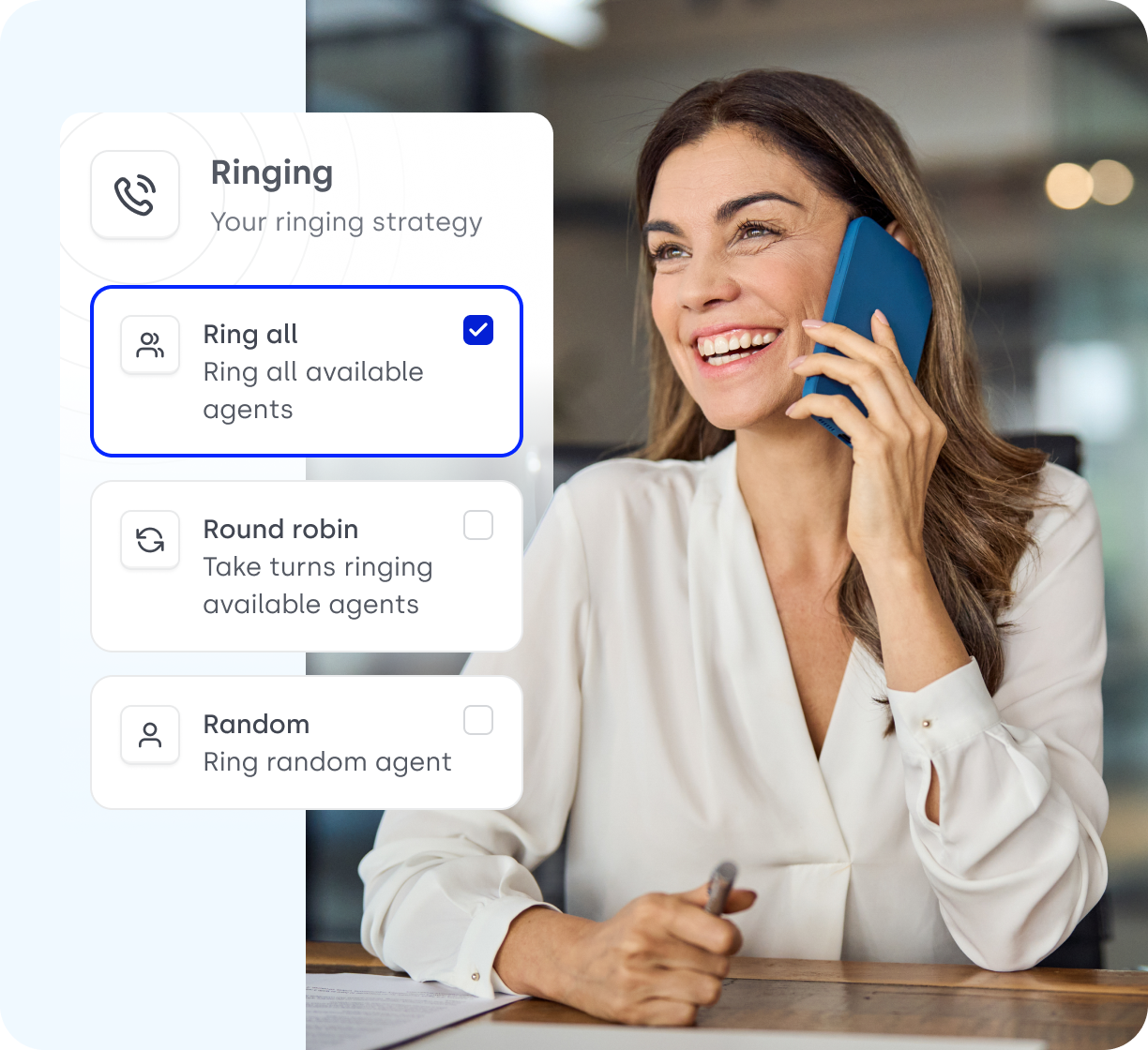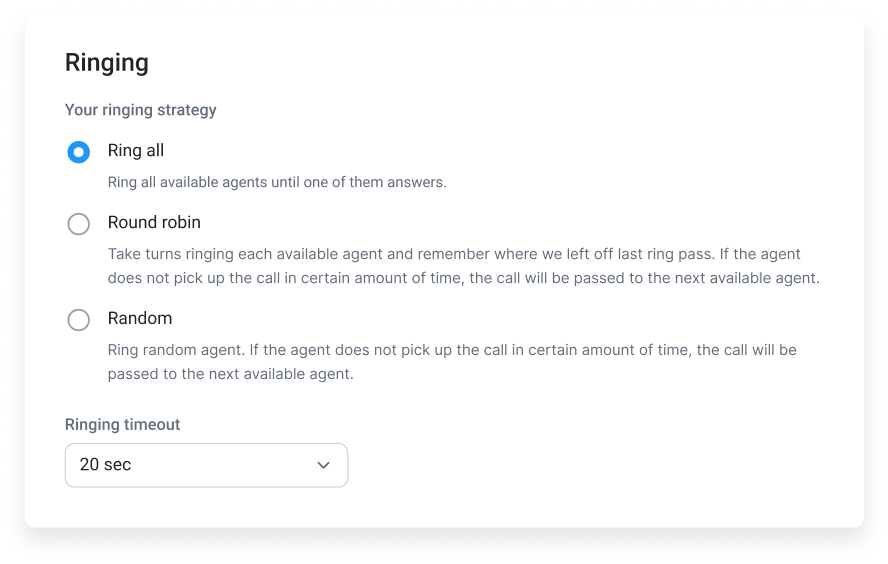- Solutions
- Solutions primary
- BY TEAM
- BY INDUSTRY
- BY USE
- BY SIZE
- View all solutions
- Solutions secondary
- Solutions primary
- AI
- Features
- Features primary
- Most popular
- first column
- second column
- third column
- fourth column
- View all features
- Most popular
- Features secondary
- Choosing the right plan
- Features primary
- Integrations
- Integrations primary
- MOST POPULAR
- first column
- second column
- View all integrations
- NEW
- first column
- second column
- View all integrations
- MOST POPULAR
- Integrations secondary
- Integrations primary
- Pricing
- Resources
- Resources primary
- Most popular
- first column
- second column
- third column
- Most popular
- Resources secondary
- Latest Blogs
- Try CloudTalk
- Resources primary
- Partners
Streamline Call Distribution with Ring Groups
Direct inbound calls to the right teams using efficient call distribution strategies. With automated ring group routing, ensure faster responses, smoother call flow management, and consistently better customer experiences—no manual effort needed.

We’ve helped thousands of global companies
Case studies featuring customers who are building faster.
What Is a Ring Group?
A ring group is a feature within your call distribution system that routes incoming calls to a designated group of agents—either all at once or in a specific order.
With flexible ring group configuration, you can tailor call routing based on agent availability, skill sets, or team roles. This ensures that every call reaches the right person faster, supporting efficient call flow management and improving the customer experience.

How Do Ring Groups Work?
Ring groups help manage inbound call handling by directing incoming calls to a selected team of agents using customized call group settings. Based on your configuration, calls can ring all assigned agents at once or follow a specific agent routing logic, depending on your setup.
This ensures that calls are answered by the first available and best-suited agent, reducing wait times and improving team responsiveness. You can adapt the ring strategy to fit your team’s workflow, making your call distribution more efficient and customer-focused.

Deliver Better Service with Smart Ring Strategies
Call groups keep inbound calls organized, and the right ring strategy determines how they reach your agents.
Whether balancing workloads or prioritizing speed, choosing the best strategy improves efficiency and reduces wait times.
- Round Robin – Calls are distributed one by one in a set sequence.
- Ring All – All agents receive the call simultaneously.
- Random – Calls are assigned to agents at random.

How to Set Up Ring Groups in CloudTalk?
- In your CloudTalk Dashboard, navigate to the list of groups and click “Add a group”.
- Enter a label for the group and provide an email for voicemail notifications.
- Click “+ADD” to select agents who will be part of the ring group.
- Choose a ring strategy, the ringing timeout, and the criteria for when calls enter the queue.
- If using skill-based routing, assign relevant skills to the agents in the groups.
Frequently asked questions
Everything you need to know about the product and billing.
What is a ring group?
A ring group is a feature within your call distribution system that routes incoming calls to a designated group of agents—either all at once or in a specific order.
How do ring groups differ from call queues?
Ring groups ring multiple phones at once or in sequence without holding calls, while call queues place callers on hold and distribute calls based on agent availability.
What are common ring strategies?
Common strategies include Ring All (sent to all agents in the group), Round Robin (distributed in a rotating sequence), Random (no specific order), and Least Busy (directed to the agent with the fewest answered calls).
Can ring groups improve customer service?
Yes, by reducing wait times and ensuring calls reach the right agent quickly, ring groups enhance customer satisfaction and service efficiency.
Are ring groups suitable for remote teams?
Absolutely. Ring groups can include remote or mobile agents, allowing distributed teams to handle calls seamlessly as if they were in the same location.
How many agents can be in a ring group?
The number varies by system, but many platforms support up to 50 agents in a single ring group, accommodating teams of various sizes.
What happens if no one answers in a ring group?
If unanswered, calls can be forwarded to voicemail, another group, or an external number, depending on the configured failover settings.



Still have questions?
Can’t find the answer you’re looking for? Please chat with our team.
Ready to get started?
Join over 4,000+ modern companies that already trust CloudTalk to have MORE and BETTER calls.






















